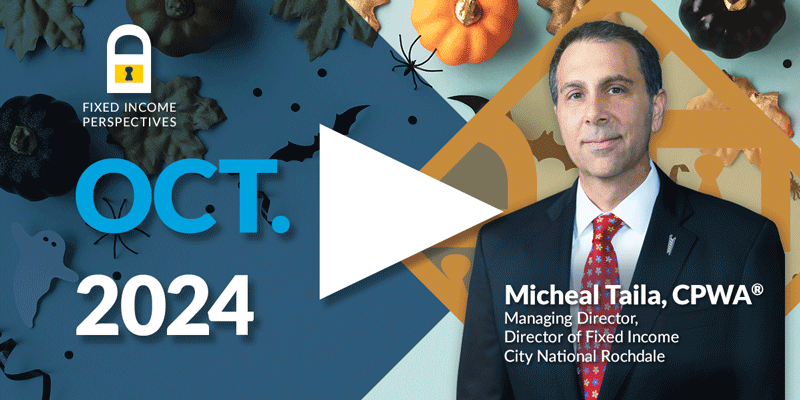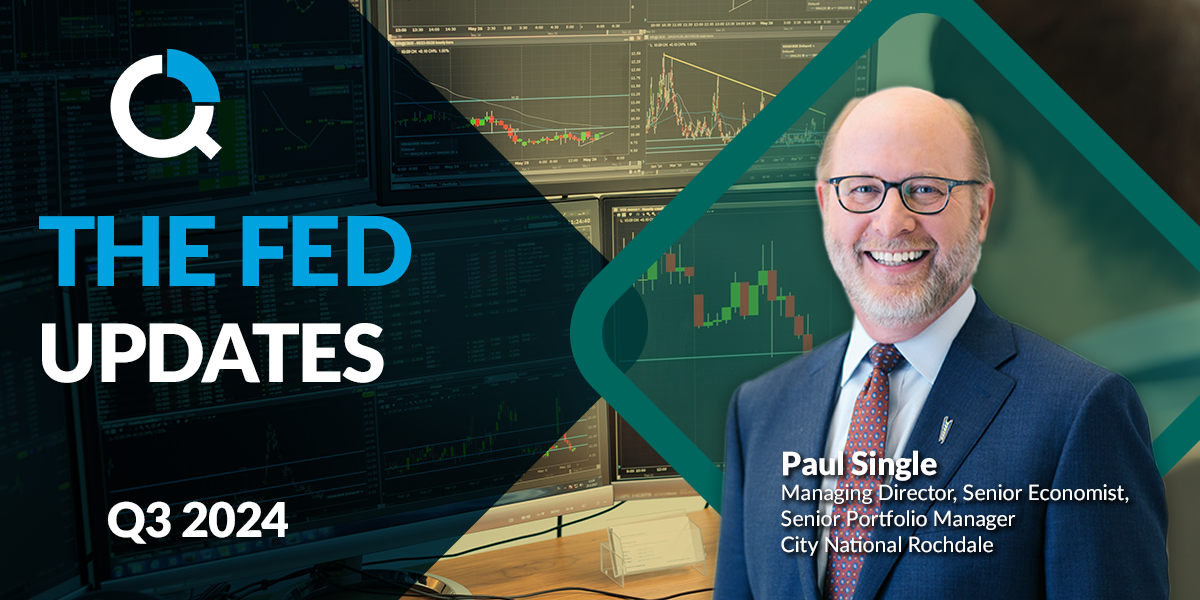

FAQs on the Markets and Economy
Is the slowing pace of economic growth impacting the labor market?
Not yet. In June, employers added 372,000 new jobs. That is a strong pace; in the past expansion, when jobs increased, they averaged 194,000.
Moreover, the unemployment rate held steady at 3.6% for the fourth straight month and at a near-fifty-year low. Inflation, high-interest rates and a slower economy have yet to affect the labor market.
Although the pace of economic growth is slowing, it is still strong. As a result, there is an enormous amount of pent-up demand for workers. A separate report issued by the labor department showed 11.3 million job openings and 6.0 million people looking for a job back in May (see chart). That means there are 1.9 jobs available for every person looking for a job, which is near a record high and about three times as strong as the average of just 0.6 open jobs for each person looking for a job.
The strong June labor report paves the way for the Fed to raise the federal funds rate by 0.75% to the medial level of 2.375 at their meeting later this month.

What can we expect to learn from Q2 earnings?
The kickoff of earnings season next week should provide some clarity on how resilient the outlook for corporate profits is.
The second quarter is already shaping up to be the toughest quarter in 18 months, with the S&P 500 on course to report earnings growth of 4.1%, a significant slowdown from the 9% growth rate in the first quarter.
For most of 2022, equity analysts have continued to paint a very positive picture of prospects for corporate profits. The decline in stocks so far has been driven entirely by a decline in valuations, with earnings growth acting as a partial offset. The S&P 500 price-to-earnings ratio has fallen about 25% since the beginning of the year, while forward earnings expectations have risen by 6%. For perspective, valuations declined 20% on average over the past five Fed-tightening cycles.
Although analysts have recently begun to lower estimates for this year and next, we believe they remain far too optimistic given elevated uncertainty around the outlook and rising recession risk. Companies have been citing a growing number of headwinds, including rising wages, higher commodity and input costs, a stronger dollar, and softer demand that could lead to earnings disappointments in the coming weeks. Margins, in particular, have plenty of room to fall from near record-high levels.
For investors, this means that further downside volatility in the coming weeks is possible. While valuations have adjusted, we think that the market is unlikely to find a bottom until earnings expectations are revised lower as well.

How do municipal bonds provide value for investors?
Amid financial market volatility, a reminder of the value and benefits of municipal bond investing can temper concern and reinforce its importance within a broader asset allocation strategy.
The implications of inflation and Fed policy on interest rates have caused municipal bond prices to decline YTD and benchmark yields to adjust higher across the curve by about 150 bps, per Bloomberg. Despite market fluctuations, these conditions unlock opportunities to obtain more attractive tax-efficient attributes, a primary objective of municipal investors.
Another critical tenet to municipal investing is capital preservation. The above-average credit quality of municipal bonds provides greater assurances of principal return. Since FY 2021, most state and local governments have earned budget surpluses due to better-than-expected revenue collections, while various federal stimuli further bolsters balance sheet flexibility. Rating trends are tilted positively while other important stress indicators remain relatively benign. Thus, municipalities are well-positioned ahead of the next budget cycle. According to Municipal Market Analytics, the overall market default rate (excluding Puerto Rico) is very low at less than 0.5% as of the second quarter of 2022, with historical data further underscoring the durability and resiliency of the asset class.
In an environment seemingly of wide-ranging disruption across financial markets, municipal bonds provide defensive characteristics over the long term for portfolios and offer diversification and relatively uncorrelated risk to other fixed income asset classes and equities. Thus, the advantage of diversification could smooth portfolio returns over time, particularly during periods of Fed tightening. In previous periods of rate hikes, municipal bonds have outperformed as valuations (i.e., the ratio of municipal to Treasury yields) declined, and yield curve moves benefitted the tax-exempt market. The allure of municipal bonds remains intact despite performance challenges YTD. Investors seeking tax optimization, quality, and stable cash flows should continue viewing municipal bonds as a critical component of overall asset allocation.

What did we learn from the Fed’s recent meeting?
Minutes from the June meeting, where the Fed raised the federal funds rate by 75 basis points to 1.625%, detailed the aggressive approach the Fed is now taking in combating inflation.
The Fed was late to the inflation-fighting campaign. In December, they projected the federal funds rate at 2022YE would be 0.9%, a simulative level. In March they increased it to 1.9%, still slightly simulative. At the June meeting, they moved it up to 3.4%, a restrictive level above the neutral rate, which the Fed estimated to be 2.5%.
The question remains, how aggressively does the Fed need to be in combating inflation? A critical sentence in the minutes state: “Participants concurred that the economic outlook warranted moving to a restrictive stance of policy, and they recognized the possibility that an even more restrictive stance could be appropriate if elevated inflation pressures were to persist.” Accordingly, the Fed is expected to raise the funds rate by another 50 to 75 basis points at their meeting later this month.
On the economic front, the minutes did not mention a recession, and the Fed staff expects the economy to pick up in the second quarter.

Important Disclosures
The information presented does not involve the rendering of personalized investment, financial, legal or tax advice. This presentation is not an offer to buy or sell, or a solicitation of any offer to buy or sell, any of the securities mentioned herein.
Certain statements contained herein may constitute projections, forecasts and other forward-looking statements, which do not reflect actual results and are based primarily upon a hypothetical set of assumptions applied to certain historical financial infor-mation. Certain information has been provided by third-party sources, and although believed to be reliable, it has not been inde-pendently verified, and its accuracy or completeness cannot be guaranteed.
Any opinions, projections, forecasts and forward-looking statements presented herein are valid as of the date of this document and are subject to change.
There are inherent risks with equity investing. These include, but are not limited to, stock market, manager or investment style risks. Stock markets tend to move in cycles, with periods of rising prices and periods of falling prices.
Investing in international markets carries risks such as currency fluctuation, regulatory risks and economic and political instability.
There are inherent risks with fixed income investing. These may include, but are not limited to, interest rate, call, credit, market, inflation, government policy, liquidity or junk bond risks. When interest rates rise, bond prices fall. This risk is heightened with in-vestments in longer-duration fixed income securities and during periods when prevailing interest rates are low or negative.
Investing involves risk, including the loss of principal.
As with any investment strategy, there is no guarantee that investment objectives will be met, and investors may lose money.
Past performance is no guarantee of future performance.
This material is available to advisory and sub-advised clients, as well as financial professionals working with City National Rochdale, a registered investment advisor and a wholly-owned subsidiary of City National Bank. City National Bank provides investment management services through its sub-advisory relationship with City National Rochdale.
Non Deposit Investment Products are: Not FDIC Insured, Not Bank Guaranteed, May Lose Value
The information presented does not involve the rendering of personalized investment, financial, legal, or tax advice. This presentation is not an offer to buy or sell, or a solicitation of any offer to buy or sell any of the securities mentioned herein.
Certain statements contained herein may constitute projections, forecasts and other forward-looking statements, which do not reflect actual results and are based primarily upon a hypothetical set of assumptions applied to certain historical financial information. Readers are cautioned that such forward-looking statements are not a guarantee of future results, involve risks and uncertainties, and actual results may differ materially from those statement. Certain information has been provided by third-party sources and, although believed to be reliable, it has not been independently verified and its accuracy or completeness cannot be guaranteed.
Past performance or performance based upon assumptions is no guarantee of future results.
Indices are unmanaged and one cannot invest directly in an index. Index returns do not reflect a deduction for fees or expenses.
Any opinions, projections, forecasts, and forward-looking statements presented herein are valid as on the date of this document and are subject to change.
All investing is subject to risk, including the possible loss of the money you invest. As with any investment strategy, there is no guarantee that investment objectives will be met and investors may lose money. Diversification does not ensure a profit or protect against a loss in a declining market. Past performance is no guarantee of future performance.
This material is available to advisory and sub-advised clients, as well as financial professionals working with City National Rochdale, a registered investment adviser and a wholly-owned subsidiary of City National Bank. City National Bank provides investment management services through its sub-advisory relationship with City National Rochdale.
INDEX DEFINITIONS
S&P 500 Index: The S&P 500 Index, or Standard & Poor’s 500 Index, is a market-capitalization-weighted index of 500 leading pub-licly traded companies in the U.S. It is not an exact list of the top 500 U.S. companies by market cap because there are other criteria that the index includes.
Muni Bond: A municipal bond is a debt security issued by a state, municipality or county to finance its capital expenditures, includ-ing the construction of highways, bridges or schools. These bonds can be thought of as loans that investors make to local govern-ments.
Bloomberg Barclays U.S. Corporate High Yield Bond Index: measures the USD denominated, high-yield, fixed-rate corporate bond market.
Dow Jones Select Dividend Index: The Dow Jones U.S. Select Dividend Index looks to target 100 dividend-paying stocks screened for factors that include the dividend growth rate, the dividend payout ratio and the trading volume. The components are then weighted by the dividend yield.
The SIFMA Municipal Swap Index: The Securities Industry and Financial Markets Association Municipal Swap Index is a 7-day high-grade market index comprised of tax-exempt Variable Rate Demand Obli-gations (VRDOs) with certain characteristics. The Index is calculated and published by Bloomberg. The Index is overseen by SIFMA’s Municipal Swap Index Committee.
CalPERS: The California Public Employees’ Retirement System, also known as CalPERS, is an organization that provides numerous benefits to its 2 million members, of which 38% are school members, 31% public agency members, and 31% state members.
4Ps: The 4P analysis is a proprietary framework for global equity allocation. Country rankings are derived from a subjective metrics system that combines the economic data for such countries with other factors including fiscal policies, demographics, innovative growth and corporate growth. These rankings are subjective and may be derived from data that contain inherent limitations.
Stay Informed.
Get our Insights delivered straight to your inbox.
Put our insights to work for you.
If you have a client with more than $1 million in investable assets and want to find out about the benefits of our intelligently personalized portfolio management, speak with an investment consultant near you today.
If you’re a high-net-worth client who's interested in adding an experienced investment manager to your financial team, learn more about working with us here


